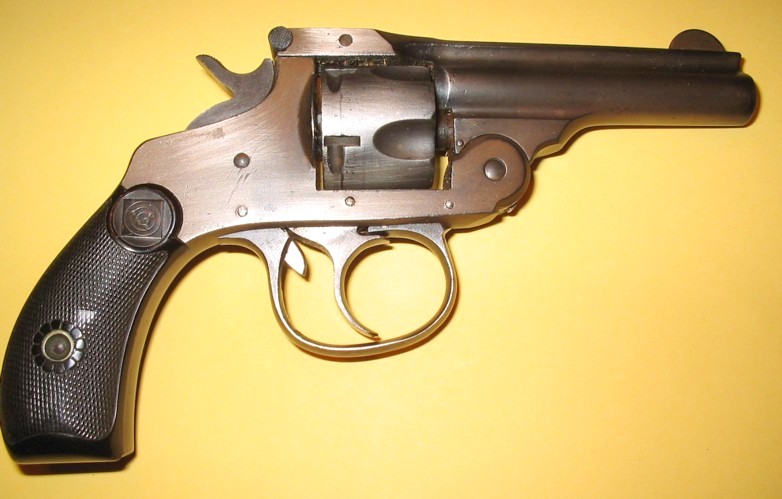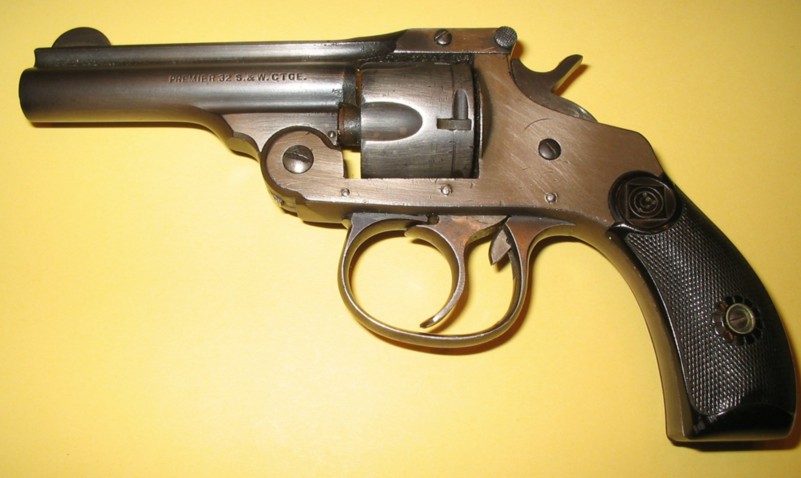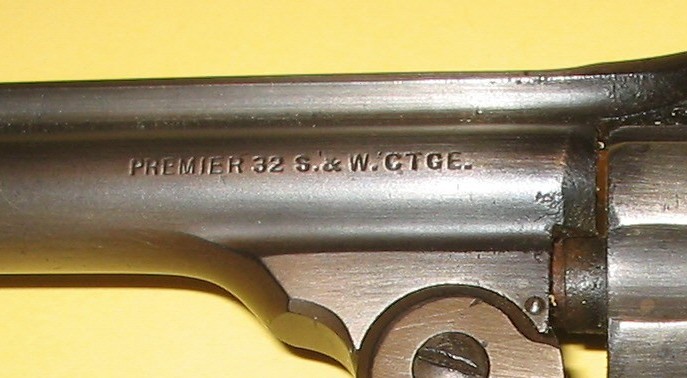
Harrington & Richardson
This is one of the innumerable copies of the Smith & Wesson 3rd Model, in the .32 caliber. This prestigious topbreak revolver has in its day been a source of inspiration to numerous American, Belgian, French, British, Spanish and Russian gunmakers, who issued thousands of copies in various calibers (from .22 to .50) in double and single action.
Some of these copies are identical to the originals and of a comparable quality, others are onlyreplica's of unreliable quality. The price makes the difference...
The Harrington & Richardson company, established in Massachussettsin the early 1840-50's, has issued a great number of firearms of acceptable quality, most of them being copies of the existing Colt, S&W, Remington and other models.
Their goal was to catch the public by selling low priced firearms, and so they rapidly came in the line of mass production of those cheap copies, to which the 1940's
American collectors gave the names "Staurday Night Special" or even "Suicide Special" because of their poor quality, that "rendered them more lethal for the shooter than for the target".
This was a slightly too severe judgement, however, since these weapons, were only destined to make their owners "feel safe" and give them, if necessary, an immediate and effective defense. In Europe, hundreds of thousands of cheap small arms were sold with the same purpose.
From that point of view, those weapons have totally fullfilled the role they were given, without forcing their owners to pay a high price for an original S&W.
As they were never made for intensive use by troops, police or long-drive cowboys, I think it would be an error to compare their quality to that of the original ones.
You should know that the vast majority of those guns have never been fired, and those who are found now rusted and damaged, owe generally their bad condition to more than a century spent in a humid cellar or attic without any maintenance. An original S&W or Colt treated the same way would not survive any better.
Yours shows some "macho" logos on the grips; the mention "Premier .32 S&W CTGE" refers to the ammunition that was the best for that weapon. The maker simply advises that the .32 S&W cartridges (CTGE) made by Premier were the best to use.
Number 178686 is the serial number, and the mention on the barrel is the H&R logo with the patent date 8.10.1895 (That means that there are sufficient differences with the original S&W to justify a different patent application and avoid patent infringments).
The .32 Smith&Wesson caliber (7.84 mm) is identical to the European .32 for the projectile, but not for the shell, that is slightly thicker.
The ammunition called .32 S&W are not necessary produced by Smith&Wesson, but are a TYPE of ammunition developed by them, that forces the gunmakers to make the cylinder chambers larger than for the European .32.
Your revolver will thus only accept the American .32, better known as the .32 Long S&W or .32 Short S&W, wich is still easy to find today.
Since it was manufactured after 1895, your revolver will probably accept both black powder and smokeless powder ammo, as long as you are using the proper caliber. The European .32 or the 7.65 Auto would fall out and jam the cylinder.
This type of weapon was largely seen in the early 1900's in the big cities, and was much appreciated among travellers, dealers, gamblers, guards, prostitutes and thugs of all kind. Their modest price ensured a large diffusion.
Marcel


